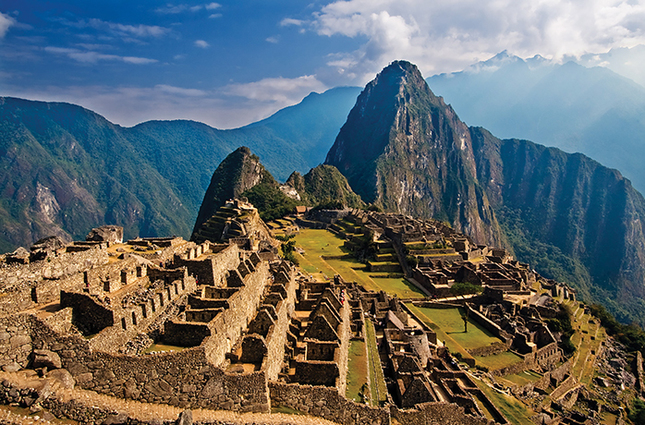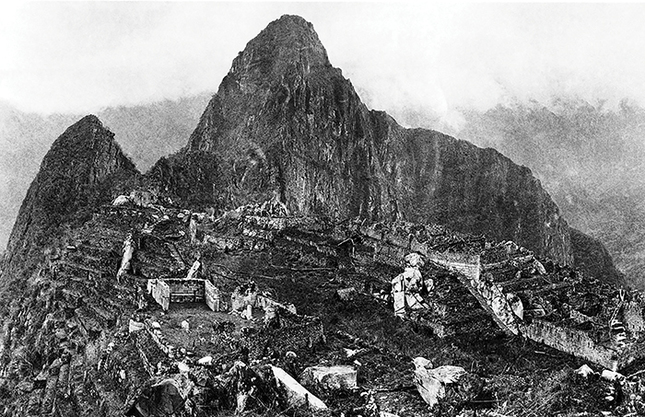
Pedro Szekely/Wikimedia Commons

Pedro Szekely/Wikimedia Commons

Hiram Bingham III ’98
Machu Picchu in 1912, after major clearing and before reconstruction work had begun.
View full image

Hiram Bingham III ’98
Machu Picchu in 1912, after major clearing and before reconstruction work had begun.
View full image
Yale archaeologist Richard Burger ’72 had in his possession bone and tooth fragments from 26 bodies that were once buried below the verdant terraces and granite temples of Machu Picchu. He wanted to know the age of these samples. Off they went, to a facility at the University of California—Irvine, to undergo an advanced form of radiocarbon dating known as accelerator mass spectrometry. The results came back: Machu Picchu, it turns out, is a few decades older than previously believed.
“The chronology of the Inca royal family has been a matter of debate for as long as people have studied the subject,” Burger says. “And that’s understandable.” Reconstructions of Incan history have typically relied on a series of deeply flawed narratives written by invading Spaniards between 1530 and 1620, few of which agree with each other.
And yet from these discordant accounts emerged an (apparently) authoritative history of the Inca, published in 1945 by Berkeley archaeologist John Rowe—Burger’s doctoral adviser, as it happens. His work drew most heavily from a single Spanish account written by Cabello de Balboa in 1586, and, in Rowe’s telling, the construction of Machu Picchu dates to 1450 or 1460. That’s a decade or two after 1438, when the Emperor Pachacuti is reported to have conquered the lower Urubamba Valley.
But Burger’s radiocarbon dates push the founding of Machu Picchu back to roughly 1420. This suggests that Pachacuti’s rise to power and the emergence of the Inca as pre-Columbian America’s largest, most powerful empire took place earlier than previously thought. Burger and his team published their findings in the journal Antiquity.
Burger also disagrees with those who claim that Machu Picchu was founded much earlier than 1420. They’re “struck by the fact that the Inca footprint is so powerful and so deep,” he says—it spanned Chile, Argentina, Ecuador, Peru, and Bolivia—and they argue that the Incas couldn’t have ascended to power so quickly. But “there is nothing to indicate that Machu Picchu was built before the fifteenth century,” he adds. “This work suggests that those considering the possibility that the Inca Empire lasted substantially longer than one century are not right.”
Burger’s work continues a long-running Yale connection to Machu Picchu, which began when Hiram Bingham III ’98, an adjunct professor of Latin American history, first revealed the site to the global scientific community in 1911. For his radiocarbon dating, Burger used samples originally exhumed by Bingham. But his work also marks a departure from his predecessors’.
“With the Inca—and they’re not the only example—we’ve long privileged documents in the telling of history, with archaeological evidence sometimes relegated to illustrating what we learned from the documents,” Burger says. “This work demonstrates how limited the documents can be.” Hard evidence often holds more truth than people’s memories.
 loading
loading